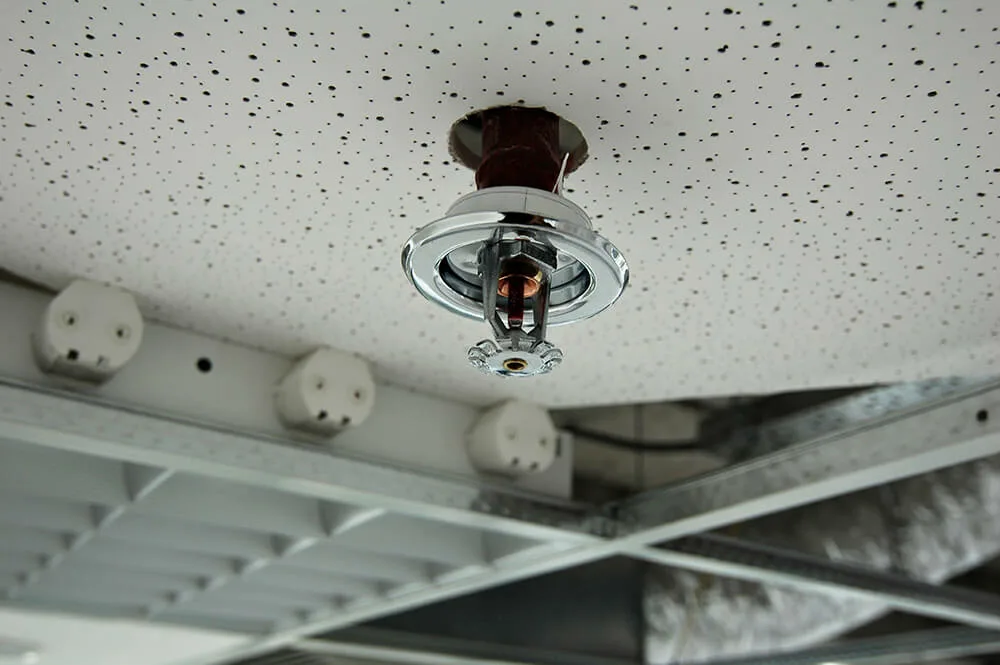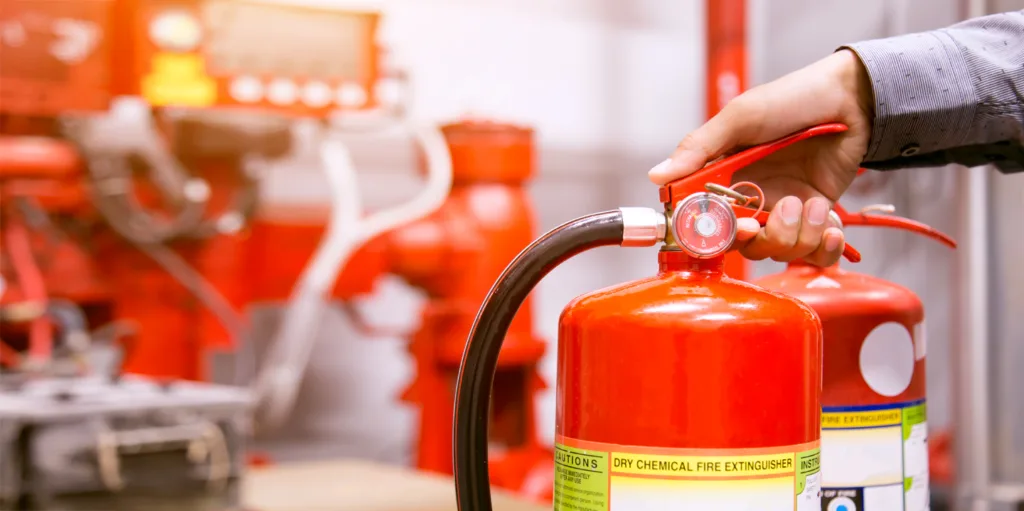
Fire protection engineering has evolved significantly over the past several centuries. Early application of fire protection engineering was intended to prevent conflagrations, which could destroy entire cities. Until the early 1900s, the primary objective of fire protection engineering was to limit a fire to its building of origin. As fire protection engineering advanced, this objective was refined to limit a fire to its object or room of origin.However, it wasn’t until the later part of the 20th century that fire protection engineering had matured to the point that it included the fundamental tenets of a distinct, professional discipline. Now it is a specialised field that use science and technology to protect people and property from fire. When designing new buildings or renovations to existing buildings, fire protection engineers develop the plan for fire protection.
An overview
Fire protection engineering is the application of science and engineering principles to protect people and their environment from destructive fire, which includes:
- analysis of fire hazards
- mitigation of fire damage by proper design, construction, arrangement, and use of buildings
- materials, structures, industrial processes, and transportation systems
- the design, installation and maintenance of fire detection and suppression and communication systems, and
- post/fire investigation and analysis.
A fire protection engineer by education, training, and experience:
- is familiar with the nature and characteristics of fire and the associated products of combustion
- understands how fires originate, spread within and outside of buildings/structures, and can be detected, controlled, and/or extinguished, and
- is able to anticipate the behavior of materials, structures, machines, apparatus, and processes as related to the protection of life and property from fire.
Professional Role in ‘Whole Building’ Design
Fire protection engineers exemplify the concept of “whole building design.” Fire protection engineers design systems that, taken individually, could be considered mechanical (fire sprinklers, fire-fighter’s standpipes, smoke control), electrical (fire alarm), architectural (means of egress design), or structural (fire resistance design).
When designed by fire protection engineers, these systems are coordinated into a comprehensive, fire and life safety strategy.
It is beneficial to involve fire protection engineers in a design at the earliest stages of planning, generally at the feasibility or concept design stage. The benefits of involving a fire protection engineer at this stage include:
- Greater design flexibility
- Innovation in design, construction, and materials
- Equal or better fire safety
- Maximization of cost/benefit
Conversely, if a fire protection engineer is not brought in to a project team until after problems are identified, delays can result as the fire protection engineer analyzes the problem and develops solutions. At this stage there may be reduced design flexibility available and resistance to change by team members from other disciplines, if portions of the project design have been completed and decisions approved. This is particularly true in cases where fire protection problems are not identified until plans are submitted for regulatory approval.
Additionally, fire protection engineers can ensure that security related provisions designed into a building do not diminish fire safety to occupants. For example, ensure that access control to a building does not also make it more difficult to quickly exit a building in the event of a fire or similar emergency.

Strategies for Achieving “Whole Building” Design Objectives
For most projects, fire protection engineering is largely practiced through the application of prescriptive codes and standards. For broad classifications of occupancies or fire hazards, prescriptive codes and standards identify, in very specific terms, exactly how individual fire protection systems are to be designed, installed, tested, and maintained.
Prescriptive codes and standards have the benefit that they are easy to apply and enforce. Additionally, buildings designed to prescriptive codes and standards have a good history of performance in fires. However, they do not result in uniform levels of safety or cost-benefit. Consider, for example, stores classified as mercantile occupancies. A store that sells greeting cards would fall under this occupancy classification, as would a store that sold liquor in bottles. Although the protection that would be required in these stores would be similar, the fire hazard presented by these stores would be different.
“Performance-based design” is a tool that can be used to look at fire safety from a “whole building” perspective. “Performance-based design” is an engineering approach to fire protection design based on
(1) established fire safety goals and objectives,
(2) analysis of fire scenarios, and
(3) quantitative assessment of design alternatives against the fire safety goals and objectives using engineering tools, methodologies, and performance criteria.
When using performance-based designs, fire safety goals for a building are identified. These goals may include life safety, property protection, mission continuity, and environmental protection. These goals are subsequently refined into quantitative measures of building performance through engineering analysis and consultation with building stakeholders, such as the building owner and code enforcement officials. Next, fire scenarios are established. Fire scenarios are descriptions of the types of fires from which the building is intended to provide protection.
The next step is the selection of design strategies. The types of fire protection strategies that are used in performance-based design are no different than those that are used when applying prescriptive codes, such as detection, suppression, egress, or fire endurance.
After fire protection strategies are developed, they are evaluated using engineering tools and models to determine whether the fire safety goals are met for each of the fire scenarios.
For most buildings, the entire building will not be designed on a performance basis. Much of the building will be designed using prescriptive codes, and for relatively simple buildings, all of the building will likely be designed using prescriptive codes. However, performance-based design offers opportunities to achieve desired aesthetics or functionality in a building. It also ensures that the fire performance of the whole building will be considered as more than an agglomeration of single systems.
Historically, performance-based design has been practiced by use of “equivalency” or “alternate methods and materials” clauses found in most prescriptive codes. These clauses permit the use of strategies other than those specified in the code, provided that they provide an equivalent or greater level of safety. Within the last few years, performance-based codes and design guides have been published. See following section, Emerging Issues.
Designing from a “whole building” approach does not require that design be on a performance-basis. It is necessary, however, that the design of fire protection-related systems be coordinated with each other and with other building systems and the overall building design.
Relationship to Building Systems and Relevant Codes and Standards
Fire protection engineers generally design the following types of systems:
- Fire sprinklers
- Standpipes
- Fire detection and alarm
- Special hazards systems, such as clean agents, water mist, or CO²
- Smoke management
Additionally, fire protection engineers frequently collaborate with other design professionals in the design of the following systems:
- Structural fire resistance
- Fire rated construction
- Means of egress


Building Fire Safety Systems
Interaction with Other Disciplines
Designing a building from a ‘whole building’ approach requires a fire protection engineer to coordinate the different types of fire protection that are designed into buildings including:
- coordination of sprinkler system zoning with fire alarm system zoning
- coordination of sprinkler system water flow and tamper switches with the fire alarm system
- coordination of fire alarm and egress system with building security
- coordination of smoke control systems with detection and HVAC system designs
- coordination of fire separations with architectural designs
- coordination of penetrations of fire rated assemblies with mechanical and electrical designs (e.g., piping, ductwork, and wiring penetrations)
- coordination of means of egress with architectural designs.
EMERGING ISSUES
Performance-based design facilitates designing fire protection from a “whole building” perspective, as it requires that interactions between all fire protection systems with the building and its occupants be considered.
Additionally, in the wake of 9/11, several issues, such as structural fire protection and means of egress of high-rise buildings, are receiving increased attention. This attention may result in changes in the way buildings are designed, or an affirmation of current approaches.
RELEVANT CODES AND STANDARDS
Fire protection is impacted by a number of codes and standards. The most frequently used codes and standards include:
National Fire Protection Association (NFPA)
- NFPA 13, Standard for the Installation of Sprinkler Systems
- NFPA 72, National Fire Alarm Code
- NFPA 101, Life Safety Code
- NFPA 1, Uniform Fire Code
- NFPA also publishes several codes and standards which cover specific aspects of fire protection and fire related hazards.
International Code Council
- International Building Code
- International Fire Code
ASTM publishes several fire protection related standards through its E-5 committee.
Conclusion
Fire protection engineering stands as an indispensable discipline in our modern world, dedicated to the preservation of life, property, and the environment in the face of one of nature’s most destructive forces. Through the integration of cutting-edge technology, rigorous scientific principles, and innovative design strategies, fire protection engineers play a pivotal role in preventing, mitigating, and managing fires. As our urban landscapes grow and evolve, the expertise of these engineers remains paramount in ensuring that structures, systems, and communities are equipped to withstand and respond to the ever-present threat of fire, making our world safer and more resilient.
About the author;
The author has more than three decades of experience in multi-disciplinary transactions ranging from industrial projects to real estate development projects. He has expertise in planning, undertaking demand assessment studies, transaction services, project execution, business development, etc.

